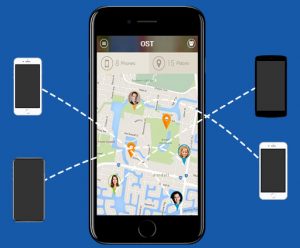Geofencing and Software
In previous blogs, we discussed What is Geofencing, and what is Geofencing digital marketing and how we do it? Today, the focus will be on the ways developers can apply Geofencing to custom software to various ends.
In brief, Geofencing is a technological tool to create a virtual boundary, or ‘fence,’ around a particular physical location. When a person and his or her smartphone or computer enters or exits the geofence, the geofence program triggers. This trigger leads to a range of automatic responses – the geofence can automatically send a text or in-app notification to the user, or start tracking him or her by his GPS, cellular, Wi-Fi or even Bluetooth data. Depending on what your desired goal is with the software, you can enhance security, safety measures or even business efficiency with the help of a Geofencing program.
Today we will discuss three examples: Geofencing for the safety of children, for the safety of the elderly, and as a way to restrict the login of a program to a particular location. However, Geofencing is a large software umbrella. The capabilities for Geofencing software can easily stretch beyond these three examples if you have an inventive use for the technology.
Geofencing Software for Safety and Tracking
The beauty of a Geofencing is that you may place your Geofence anywhere in the world you like. You can build that fence, or that boundary, in any way you like, expanding and restricting the parameters into any shape or size to suit you, your business and even your family’s needs.

Let’s take the example of a parent who wants to track and ensure the safety of his or her child before and after he or she goes to school. Yes, Covid-19 has restricted the ability for children to go to school, but we can locate this hypothetical example outside of the circumstances of the pandemic and shutdowns. With a Geofencing software, you can erect a geofence around your child’s school and a similar fence around your own house. When your child leaves the geofence around the school or the house, his or her mobile phone can automatically send you an alert: if you need to check in with your child about his or her plans for coming home, you can. If he or she has a karate lesson, you can erect a geofence around the dojo so that when he or she arrives, you can rest assured that he or she is safe.
An alternative-yet-related example is that of an elderly person living and being cared for at home. Let’s say you have a parent or grandparent who suffers from dementia. He or she lives at your house because you don’t want to pay for the services of a nursing home. If you want to make sure your elderly housemate is safe, especially if he or she can be hard to predict, you can create a geofence around your house that activates when he or she leaves the area. If your grandparent doesn’t use a cell phone, which is likely to be the case, you can develop a software that works with a tracking device which you can have your elderly loved one wear around his or her neck. The geofence service you develop won’t act necessarily as a punishment or restriction, but rather as a tool for open transparency. You can react to situations as they come more easily if you have the data to follow either an elderly housemate or your child.
Geofencing Software for Added Security Authentication
If you are interested in using Geofencing for your business, you can use the technology for reasons other than digital marketing. We can start with an example involving data security and login authentication. Let’s say you have developed a very special software for making ice cream. This software uses temperature sensors and IoT (Internet of Things) data to automatically mix the ice cream and flavoring at the ideal moment, when temperatures align in the machine. You need all of your employees to access this program in order to make the product for your customers, but if any one of your employees shares this program outside of the company, your business could be ruined.
With Geofencing security, you can set up a geofence around your business, in this case the ice cream maker. The authentication measure will pop up when he or she tries to login to the program. When an employee opens the program in the building or within the geofence, he or she will have no problem accessing the software and making the ice cream. If he or she tries to open the software outside of the geofence, the security measure will kick in and prevent him or her from opening the ice cream program. If this restriction is too strict and you need to let employees work remotely, you can modify the geofence. You can create geofences around your workers’ houses so that they can work from home while still retaining the security measure: anyone not at the ice cream shop or at your employees’ houses still cannot access your patented ice cream software.
Geofencing is a Flexible Tool for Custom Software
Though we have covered a couple of potential examples here, Geofencing in software development can enable tons of other functions as well. Depending on what ideas you have for your business, and what uses you envision for your Geofencing software, a smart, local development team can help you bring your vision into reality.


